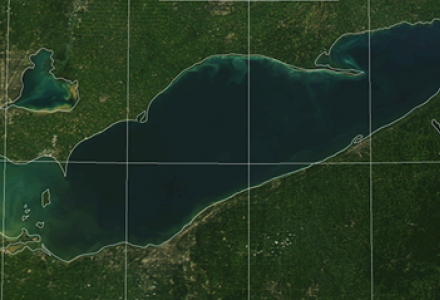Over the past 175 years, more than 180 aquatic, non-native species have found a home in the Great Lakes. They arrived through human activities such as shipping, building the Welland Canal around Niagara Falls, or even intentional introduction. In most cases these species do not cause problems. But about 45 of these have become invasive and represent one of the toughest challenges facing the Great Lakes ecosystem.

This is the conclusion the IJC reached in its draft Triennial Assessment of Progress (TAP) under the Great Lakes Water Quality Agreement. Canada and the United States recognized how important this issue had become when they included an annex in the 2012 Great Lakes Water Quality Agreement on aquatic invasive species (AIS) to create new programs to prevent and stop these introductions. The TAP report outlines the aggressive approach both countries have taken to enforce ship ballast exchanges. This approach, in concert with AIS prevention programs by a network of federal, state, provincial and local government agencies and nongovernmental organizations, has created a key Agreement success story: Coordinated enforcement and prevention programs have achieved nearly 100 percent compliance in ballast water discharges and exchanges, with no new discoveries of AIS from ballast water discharges confirmed since 2006. This is an impressive feat, considering at least 25 million tons of cargo travels annually to the Great Lakes from international ports in Europe, the Middle East and Africa.

At the same time, the governments’ progress report listed the status of AIS as poor, and the trend deteriorating, and the IJC agreed with this assessment in its draft report. Why? Previously established invasive species such as zebra and quagga mussels (Dreissenids) and other AIS are spreading through the lakes, causing massive disruption to the ecosystem and food chains, and decreases in native species.
According to the TAP, “To address the spread of AIS, the regulation of ballast water discharges from ‘Lakers’, ships that remain within the Great Lakes, is being considered by Transport Canada as well as several states, though Lakers currently are exempt from US Coast Guard requirements. The two federal governments have agreed to seek consistency and compatibility between US and Canadian ballast water requirements in the 2017-2019 priorities for science and action, and this should provide a path towards compromise and harmonious joint implementation for both Lakers and seagoing vessels.”
Terrestrial invaders such as the common reed (Phragmites), garlic mustard and purple loosestrife as well as insects like the Asian longhorned beetle and emerald ash borer also are spreading across the region, which reduce native plants and cause deforestation. These impacts cause increased inputs of sediments, chemicals and nutrients into the Great Lakes.
The TAP report concludes that effective control, containment and eradication measures are essential for terrestrial and aquatic invasive species. The two countries have identified this as a priority for the next triennial cycle of Agreement work. A key to accomplishing this will be eliminating discrepancies in terms of acceptable chemical, physical and biological controls among the state, provincial and federal agencies. Stable funding for research and effective action also is essential to ensure long-term, binationally coordinated prevention and control of invasive species.
What Do You Think?
In its draft TAP report, the IJC states: “There has been significant progress in preventing the introduction of AIS to the Great Lakes. The spread of previously introduced invasive species is a major concern. Further progress on AIS prevention and control could be enhanced by improving long-term program funding mechanisms, reaching agreements on permitting the use of all types of control measures across jurisdictions and requiring ballast water exchange and flushing in addition to discharge treatment.”
Do you agree with this finding of successes and gaps in the Parties’ progress toward the achievement of this objective?
How could the Parties better harmonize permitting, remove administrative barriers and adopt an integrated approach to AIS management?
Are there other ways the Parties could improve their binational approach to invasive species?
Tell us what you think by going to Participate IJC to answer these questions and provide your thoughts about AIS in the Great Lakes before April 15, 2017.

Sally Cole-Misch is the public affairs officer for the IJC’s Great Lakes Regional Office.




